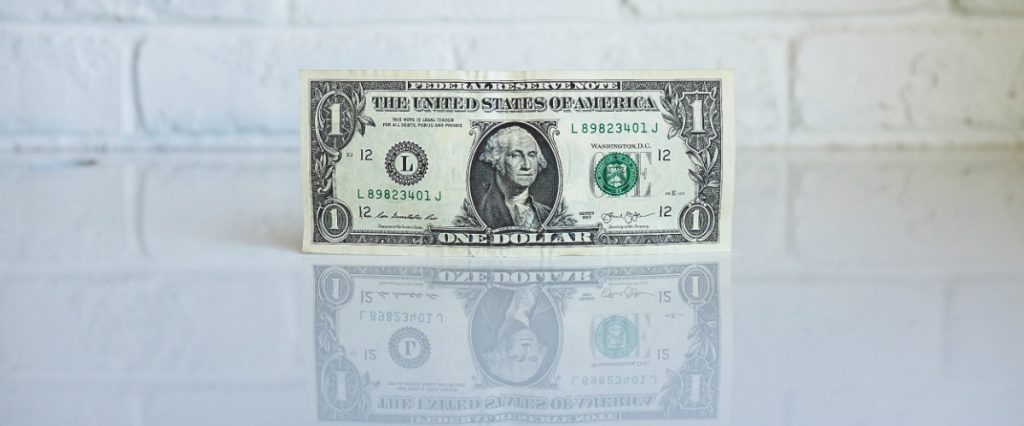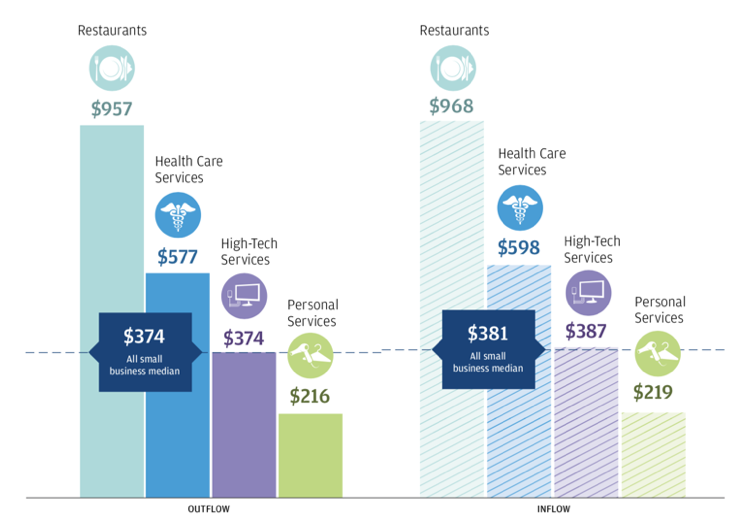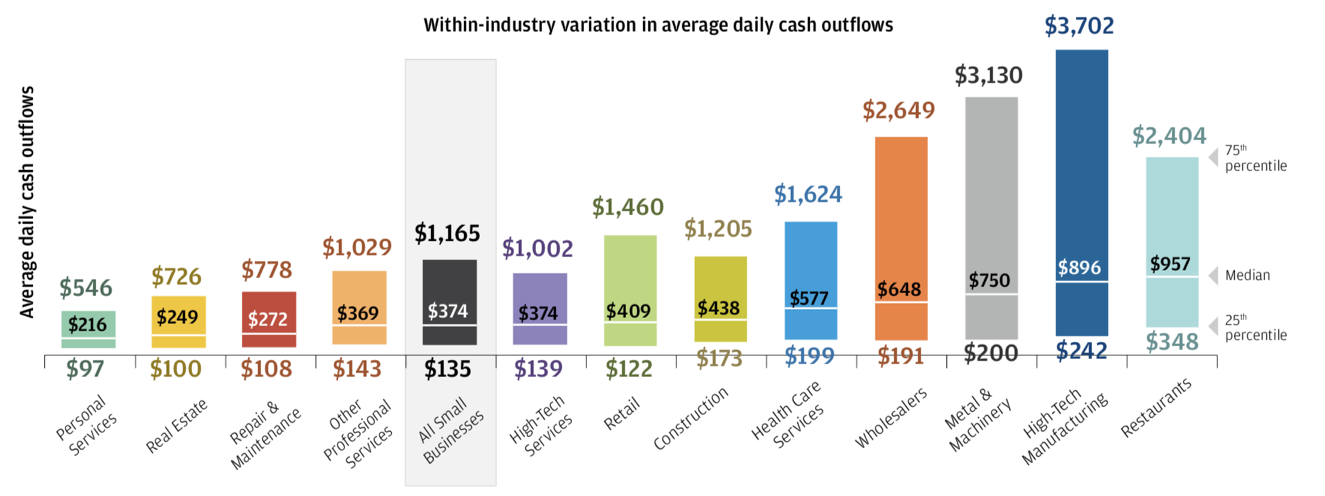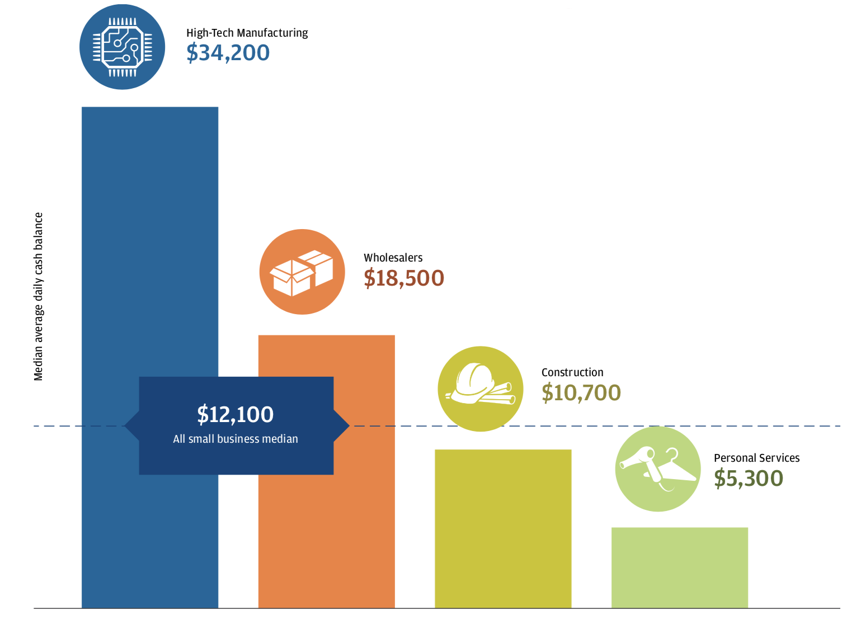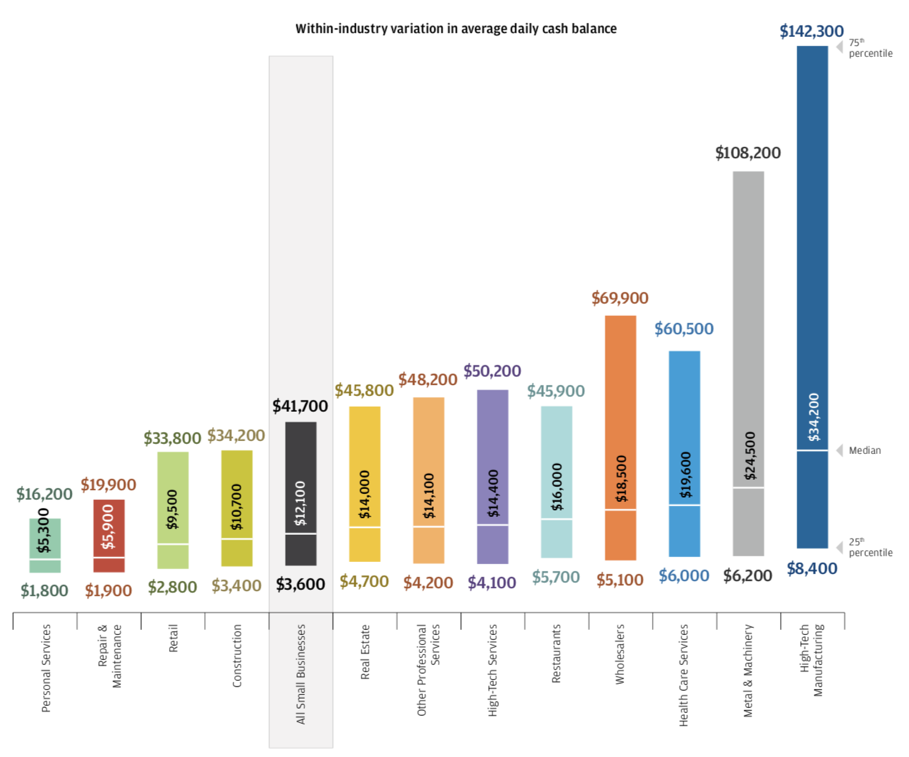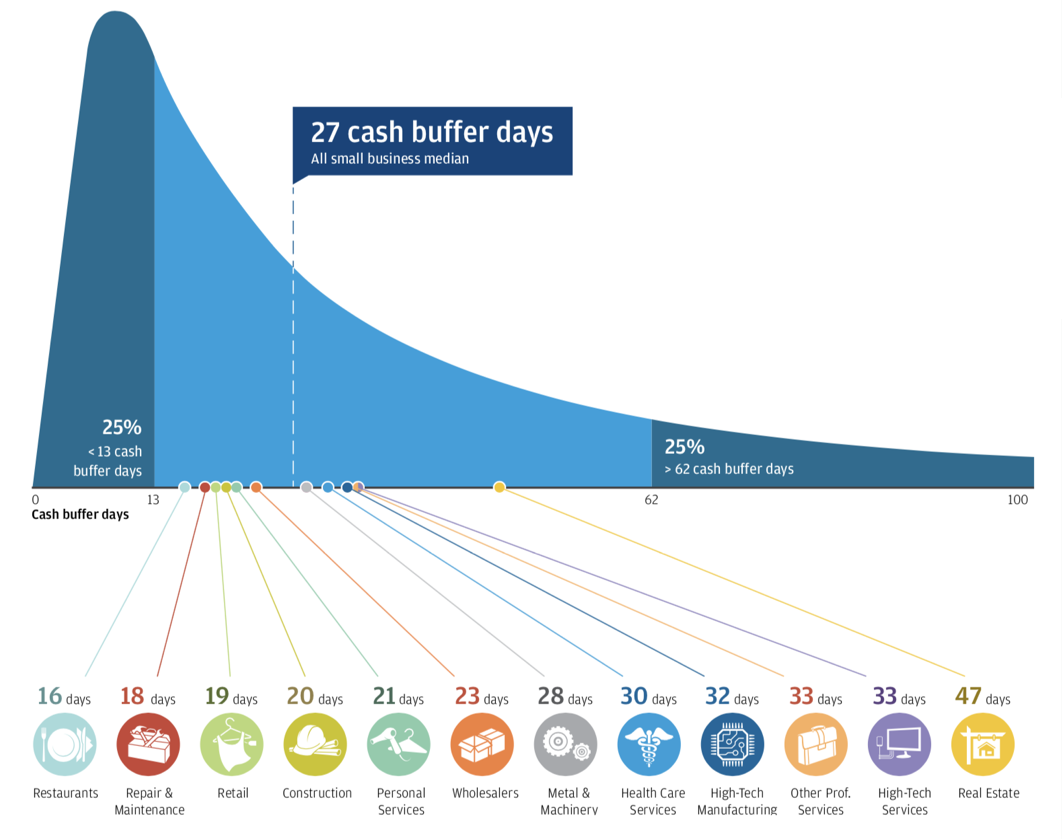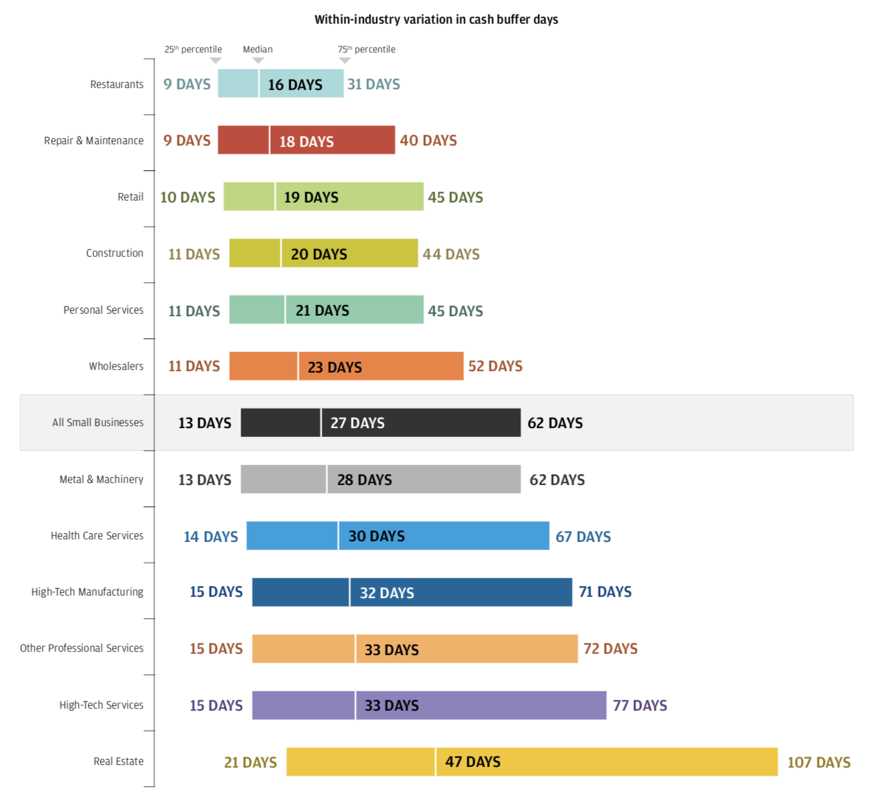For most small businesses, cash reserves are an important liquidity reserve tool to meet cash needs. Always-available deposits in the business account provide a readily available means of paying employees and suppliers in normal times, and are an important factor to fall back on in difficult times. This is especially true for small businesses with their limited access to credit and other sources of liquidity. In other words, cash reserves are a key measure of a small business's vitality, resilience and security.
Using a dataset of more than 470 million transactions from about 600,000 small businesses from February to October 2015, an analysis by the JPMorgan Chase Institute shows that half of all small businesses in the US have a cash reserve equal to 27 days of their typical outgoing payments.
Finding #1 of the study
The cash flows of most US small businesses are lower than generally assumed.
The medium-sized small business in the US has average daily disbursements of USD 374 and an average inflow of USD 381. Converted as of May 2019, this means average monthly inflows of around EUR 12,800 and outflows of EUR 12,570.
Disbursements refer to debits from business accounts, such as the purchase of materials, salary payments, withdrawals from owners, loan repayments or tax payments. There are large fluctuations within an industry and between industries.
Receipts refer to credits to business accounts, such as revenues, owner deposits, loan financing or tax credits.
Finding #2 of the study
The average small business has an average daily available cash balance of USD 12,100, the equivalent of around EUR 13,550.
There are naturally large fluctuations within and between sectors.
With average inflows and outflows of about EUR 430 per day (about EUR 155,000 per year) and average cash reserves of only EUR 13,550, the typical small business can provide few full-time jobs after covering other expenses. Without good and continuous cash flow management, even small changes in cash inflows or outflows - especially if they are unexpected - can have a major impact on the financial health of these businesses.
Finding #3 of the study
The medium-sized small business in the US has a cash reserve that allows it to make normal disbursements for 27 days without relying on new receipts.
Fluctuations within a sector and between sectors are naturally large.
Cash reserves, measured in days, or cash buffer days, provide a useful benchmark for individual small businesses. Although it is clear that the small business sector is heterogeneous and each company has its own challenges, cash flows, balances and cash reserve measured in days can illustrate the Cash position and financial resilience of small businesses.
A large proportion of small companies in the USA have limited Cash position. This makes them vulnerable to economic crises. With an average of only 27 cash buffer days - and much less in industries such as restaurants or repair and maintenance - the typical small business has a low failure rate in economic headwinds and crises.
Given that cash flow management, or Cash flow planning , and expense management are the top two concerns of small business owners, and given the uncertainties of short-term credit options, JPMC expects most small business owners to hold cash in accounts as a financial buffer.
Moreover, in addition to regional or market-wide economic crises, many small businesses face unexpected expenses, late or unpaid payments from customers or other specific challenges.
Considering the fact that the average small business receives only EUR 430 per day, these challenges do not have to be large to cause damage.
And while some small businesses are lucky enough to have access to credit, it may be too little too late. Small businesses in the US have to wait an average of 60 to 90 days to get credit. As a result, most small businesses rely on their cash buffer days to survive during crisis situations. However, 27 days of cash tolerates a very limited margin of error for the typical small business.
Credits: Photo by NeONBRAND on Unsplash
